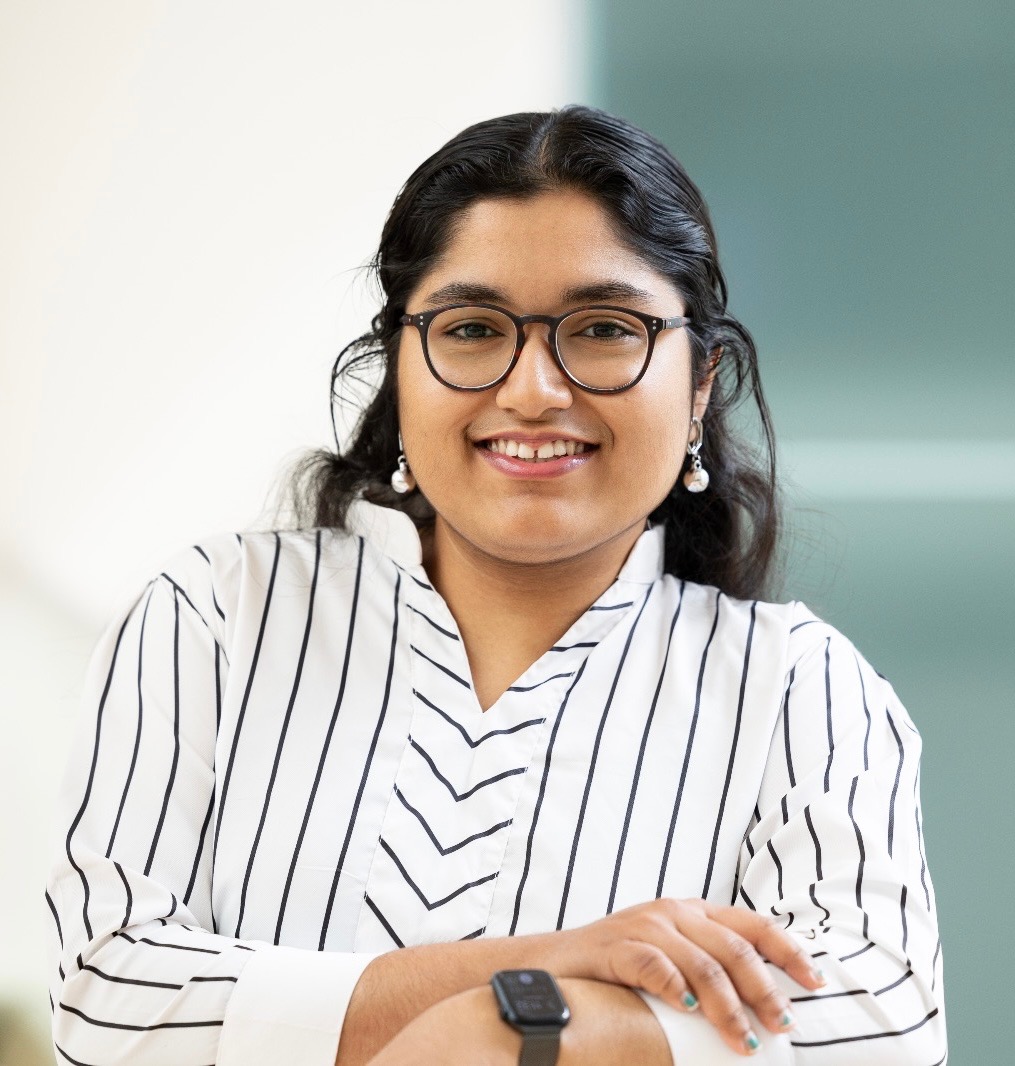About Me - An Engineer, Scientist and STEM Advocate
I am a PhD student in the program in Speech and Hearing Bioscience and Technology (SHBT) at Harvard University and advised by Dr. Josh McDermott at the Laboratory of Computational Audition, BCS, MIT and a Graduate Fellow at the K. Lisa Yang Brain-Body Center at MIT. I am interested in everything related to hearing and brain. My research focuses on understanding auditory perception following hearing impairment and applying those insights in developing improved hearing prostheses. This is an interdisciplinary research work utilizing concepts and tools from engineering, computational neuroscience, cognitive science and clinical research. I run experiments on neural network models as well as human participants (both online and in-person).
I am very fortunate to have spent my summer 2024 in the beautiful Cambridge, UK working as an Audio, AI, Computer Vision Research Scientist Intern in the Reality Labs, Meta.
I also had the opportunity to work with Dr. Sunil Puria and Dr. Heidi Nakajima at Mass. Eye and Ear as graduate rotation student and with Dr. Prasanta K. Ghosh at IISc, Bangalore as undergraduate summer student. Before coming to Harvard in 2021, I received my Bachelors degree in Electronics and Telecommunication Engineering from Jadavpur University, India where I was working with Dr. P Venkateswaran on developing drones with hearing capabilities.
For details about my undergraduate projects, please visit here.
Current Research
Understanding and Optimizing Cochlear Implants using Machine Learning
Cochlear Implants (CIs) are one of the most successful neural prostheses in the world. In spite great success, current CIs still fail to restore fully normal hearing perception, possibly (1) because of the suboptimal signal processing strategies being used to convert sound signals into electrical stimulation (2) the brain pathway may not be able to adapt itself completely to the altered peripheral representation. Testing these hypotheses directly on CI users is technically challenging. My research focuses on developing neural network models of CI mediated hearing perception. Models that can accurately predict what a person hears with CI input may help us better understand the different factors contributing to the successes and limitations of current CIs and efficiently explore the optimal space of CI signal processing and stimulation strategies. If you are interested to know more about my research work, please take a look at one of my recent presentations or a recent abstract about my work.
Previous Research
Middle-ear and Cochlear Model Parameter Estimation with Simulation based Inference
Finite Element (FE) models of the ears have been used to explain experimental data and predict system behavior under circumstances that cannot be studied experimentally due to measurement limitations. One crucial step in developing these models is to assign physical parameters to different components of the models. Mechanical parameters of auditory tissues are either not reported in the literature or reported in a wide range, due to the different experimental methods or inevitable inter-subject variabilities. So far, these parameter identifications have been via time-consuming and laborious subjective sensitivity analysis methods. This project proposed to utilize the pattern-recognition power of Neural Networks (NN), particularly, the Simulation-Based Inference (SBI) approach (Gonçalves et al., 2020, eLife), to accelerate the process of accurate objective parameter estimation for the human middle ear and gerbil inner ear FE models.
Design and Testing of Fully-Implantable Middle Ear Microphone
Cochlear implants (CI) have been a very successful hearing-assistive device with approximately 736,900 users worldwide, as of December 2019. However, the external microphones that CI devices use is limited by their cosmetic and functional drawbacks. To overcome such limitations, this project proposes a fully-implantable middle ear microphone called the Drum-mic that will be utilized to transduce the motion of the umbo (the point where the bottom end of the manubrium forms the center of the eardrum) to electrical signals to be fed to the CI processor. Such implantable design will also be helpful to employ the direction-sensitive filtering effect of the pinna to render naturalistic sound perception. While many other implantable microphones like the Envoy Esteem detect motion of the incus through point contact with a needle, the drum-mic is robust and compliant enough to directly capture the motion of the umbo where motion is large and mostly one-dimensional.
STEM Advocacy and Outreach
I am very passionate about science communication and mentoring activities. I serve as the Mentoring Co-Chair of Harvard Graduate Women in Science and Engineering (HGWISE) where I help in matching graduate students with mentors from academia and industry to guide them in their desired career paths. I am also the Seminar Coordinator for Science in The News (SITN) Seminar Series. Throughout my undergraduate and graduate years so far, I have been extensively involved in the role of STEM educator at organizations such as Program of Ragon and IMES in Science and Medicine (PRISM) science club, Jadavpur University Science Club. I feel very fortunate to have the opprtunity to mentor >100 high school students and >150 undergraduates (in groups) so far in different capacities. I am also very excited to serve as a Research Mentor during summer 2023 for the MIT Summer Research Program in Neuroscience.
I am a strong believer in “Accessible Science”. I try to put all possible efforts for making scientific tools such hardwares and softwares available to students and encourage them in developing open-source projects. Jadavpur University UAV Innovators’ Lab is one such endeavor to make scientific hardwares (especially focusing on Unmanned Aerial Vehicle (UAV) related research) accessible to students free of cost for innovative project works.
Apart from Research
When not busy in research, I love to go for short walks and easy hikes; listen to music; workout (a little bit); dance (a lot!); and explore the beautiful Boston and Cambridge.

